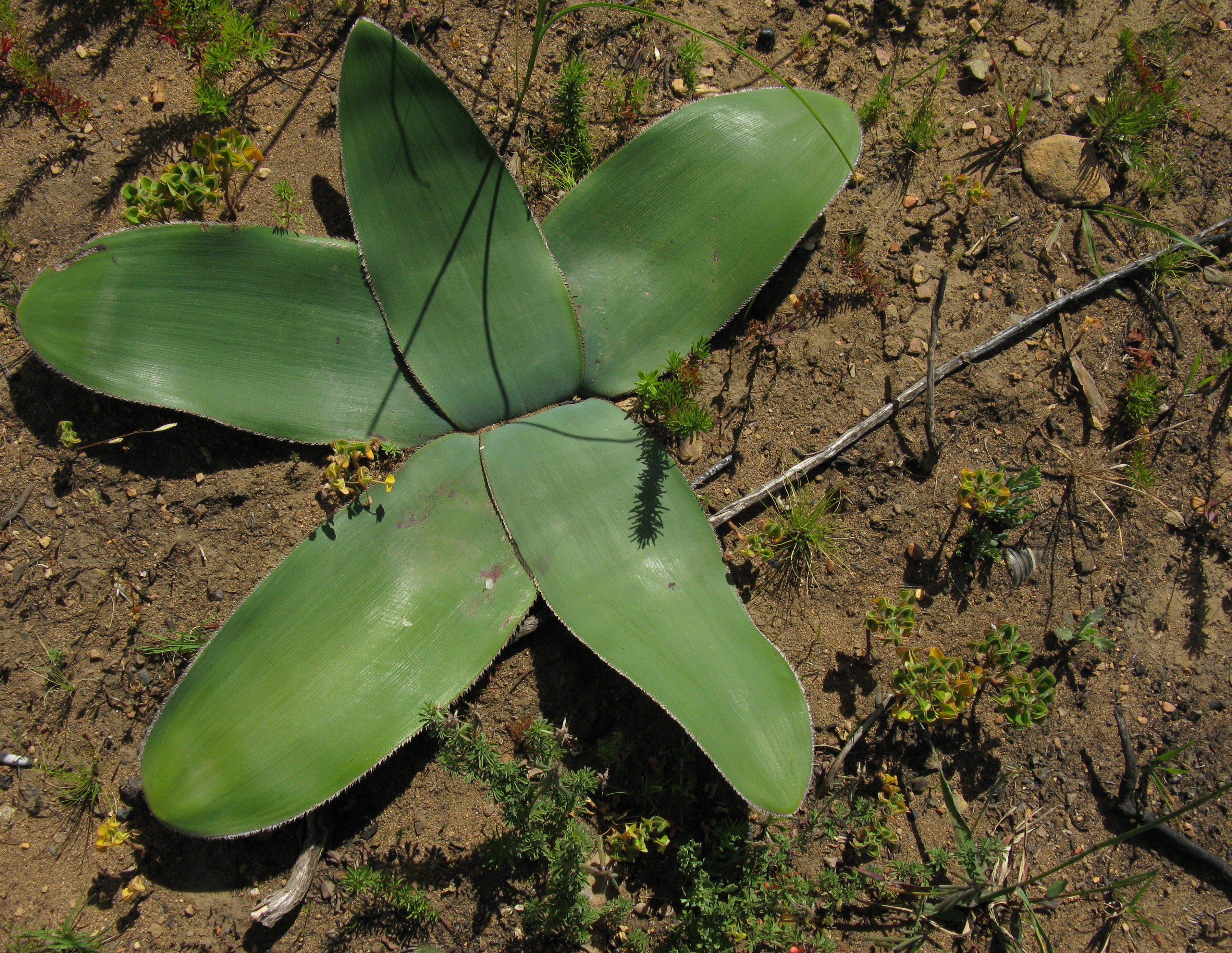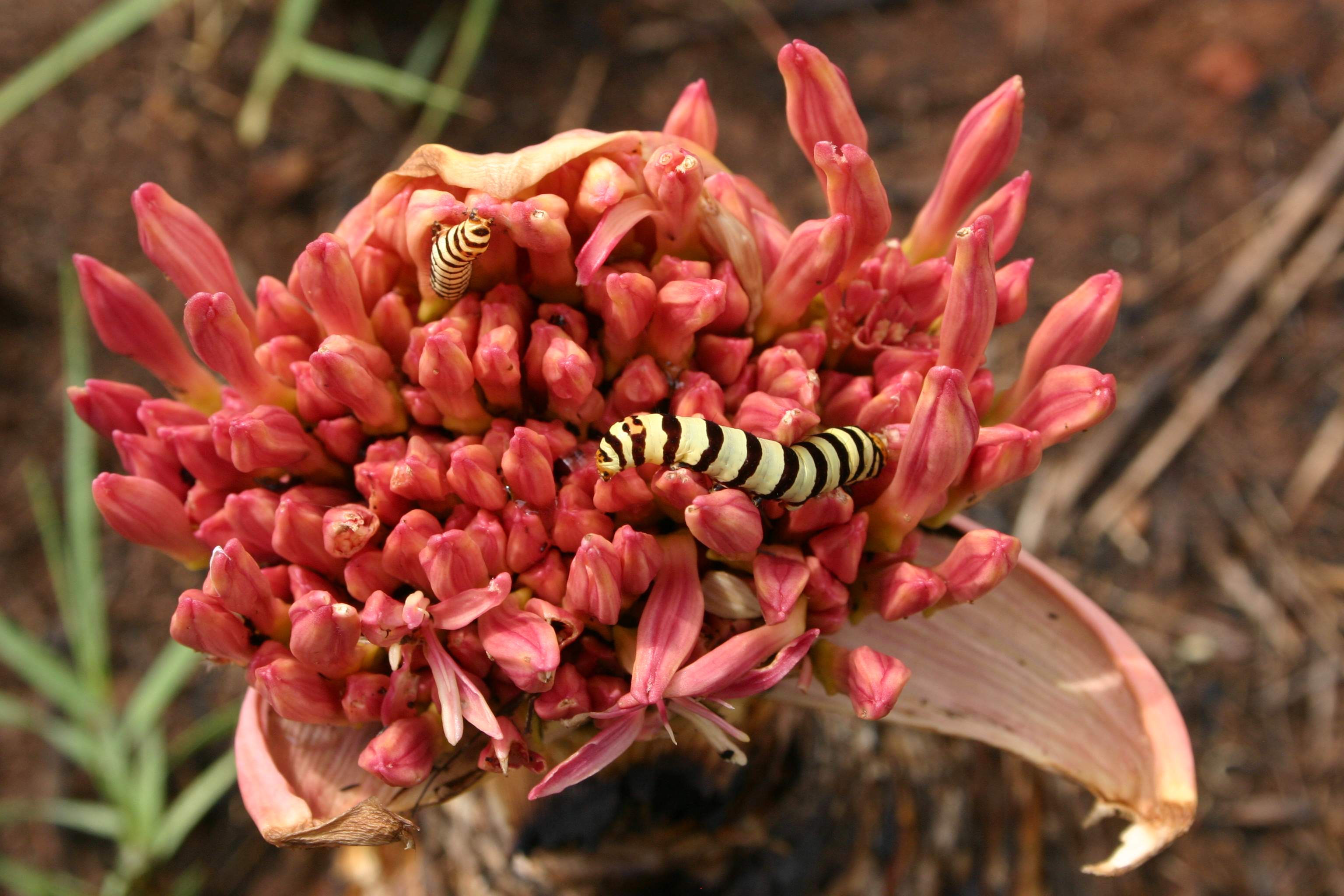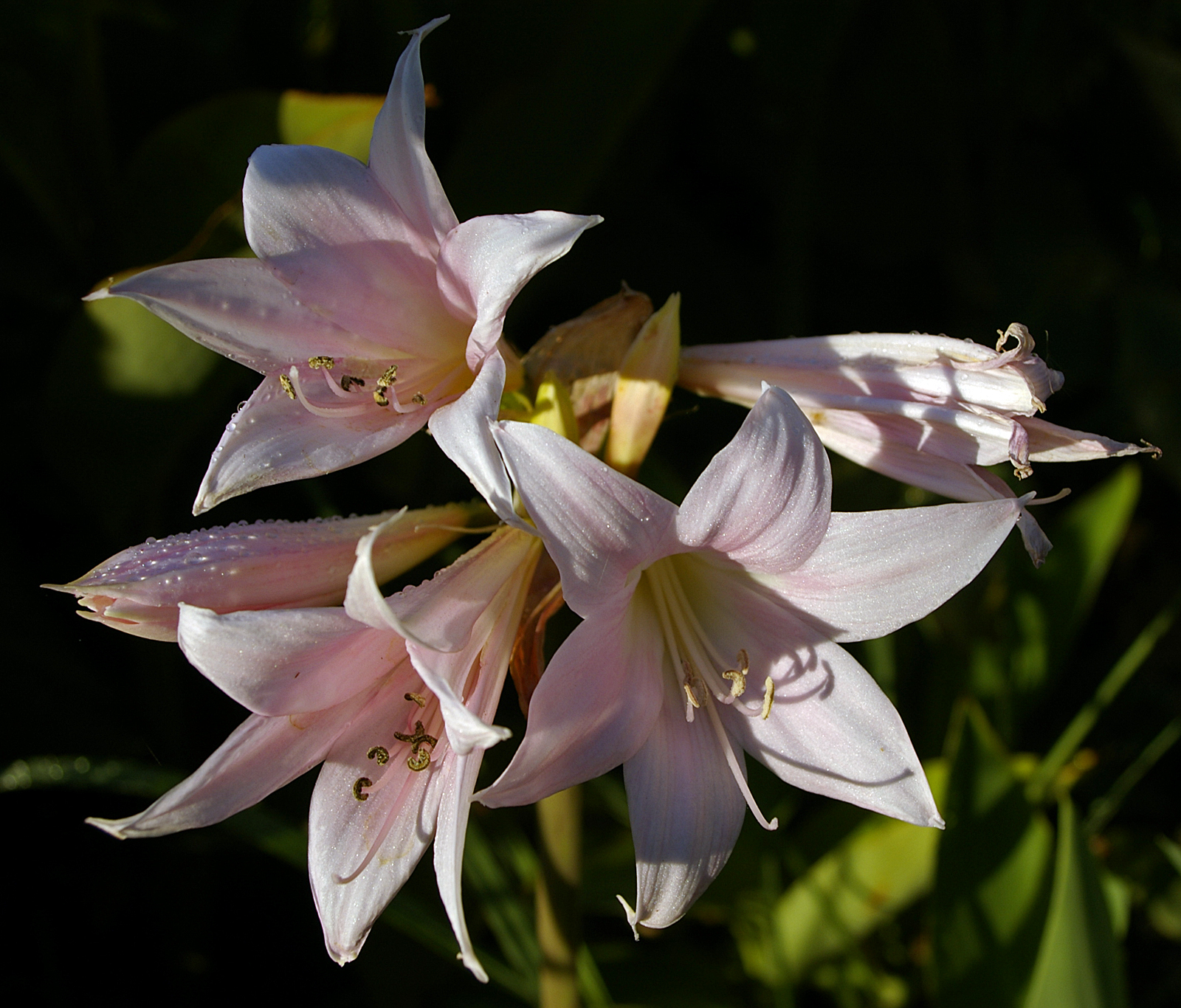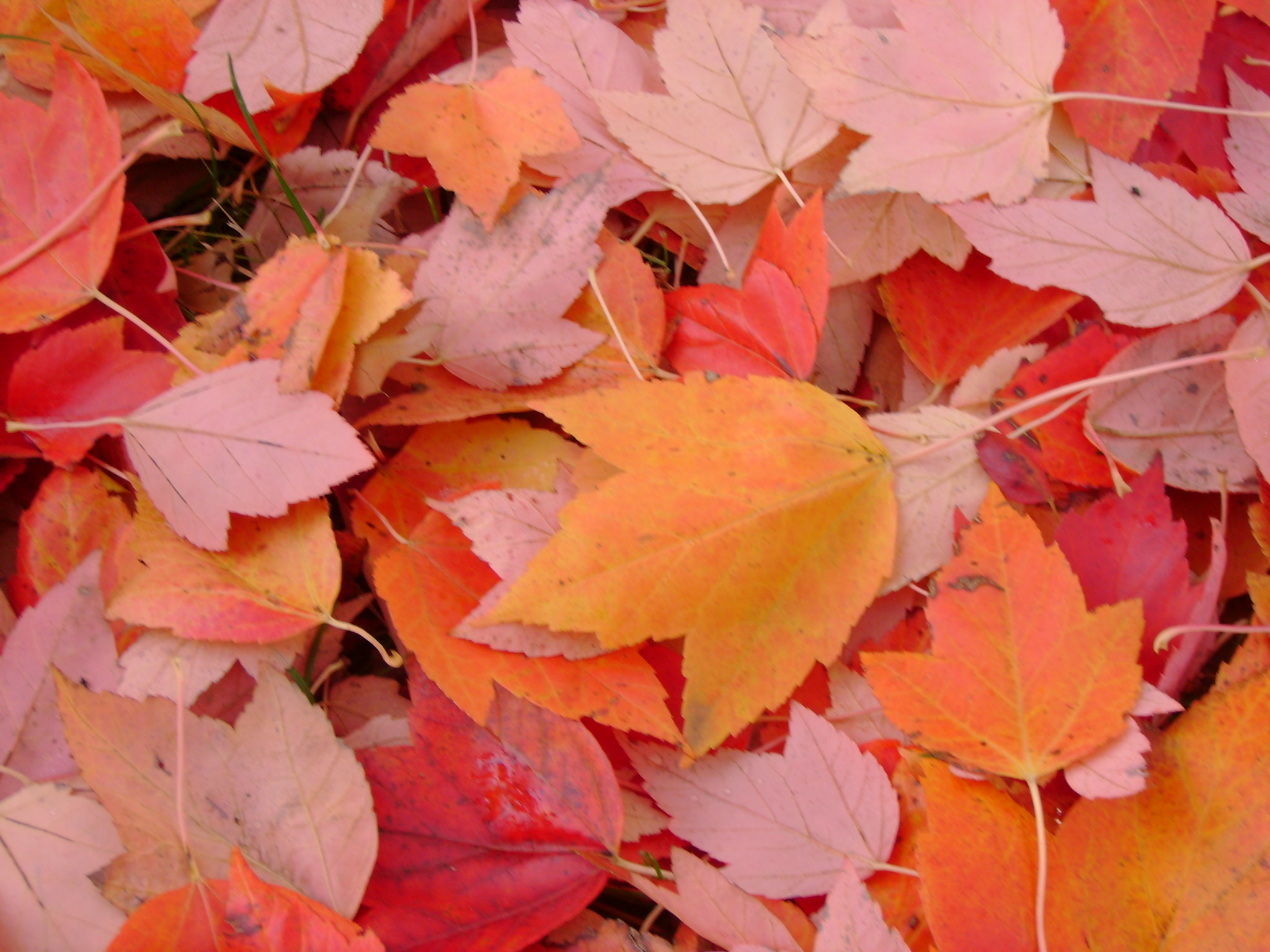|
Crininae
Crininae is one of four subtribes within the tribe Amaryllideae ( subfamily Amaryllidoideae, family Amaryllidaceae), with a pantropical distribution (''Crinum'') and also sub-Saharan Africa. Description Leaves frequently show an intercalary meristem and are usually fringed with cartilaginous teeth. The leaf apices are also often truncate (cut off). The flowers may be actinomorphic to zygomorphic, with a perigone tube with free stamens. The fruit is indehiscent, irregular, and often rostellate (rosetted). The scape does not abscise (shed) during seed dispersal, with the exception of ''Ammocharis longifolia'' where it detaches at ground level. The seeds also lack an integument, but are endosperm-rich and partially chlorophyllous with cork-covering. Taxonomy Phylogeny Crininae are placed within Amaryllideae as follow: These are phylogenetically related as follows: Subdivision As circumscribed by Meerow ''et al.'' (2001), there were three genera (Species), althou ... [...More Info...] [...Related Items...] OR: [Wikipedia] [Google] [Baidu] |
Amaryllideae
Amaryllideae are a tribe of subfamily Amaryllidoideae (family Amaryllidaceae). They are herbaceous monocot perennial flowering plants with a predominantly Southern African distribution, with the exception of the pantropical genus ''Crinum''. They are generally treated as consisting of four subtribes. In addition to ''Crinum'', other genera include ''Amaryllis'', ''Boophone'' and ''Strumaria''. Taxonomy Phylogeny The placement of Amaryllideae within subfamily Amaryllidoideae is shown in the following cladogram: Subdivision There are four subtribes: * Amaryllidinae Pax * Boophoninae D.Müll.-Doblies & U.Müll.-Doblies * Crininae Baker * Strumariinae Traub ex D.Müll.-Doblies & U.Müll.-DobliesBot. Jahrb. 107: 18. 1985 emend Meerow & Snijman, 2001. These are phylogenetically related as follows: Amaryllidinae: Type. Monogeneric subtribe for genus ''Amaryllis''. Boophoninae: Monogeneric subtribe for genus ''Boophone''. Crininae: Three genera including ''Crin ... [...More Info...] [...Related Items...] OR: [Wikipedia] [Google] [Baidu] |
Amaryllidoideae
Amaryllidoideae (Amaryllidaceae ''s.s.'', amaryllids) is a subfamily of monocot flowering plants in the family Amaryllidaceae, order Asparagales. The most recent APG classification, APG III, takes a broad view of the Amaryllidaceae, which then has three subfamilies, one of which is Amaryllidoideae (the old family Amaryllidaceae), and the others are Allioideae (the old family Alliaceae) and Agapanthoideae (the old family Agapanthaceae). The subfamily consists of about seventy genera, with over eight hundred species, and a worldwide distribution. Description The Amaryllidoideae are herbaceous, perennial flowering plants, usually with bulbs (some are rhizomatous). Their fleshy leaves are arranged in two vertical columns, and their flowers are large. Most of them are bulbous geophytes and many have a long history of cultivation as ornamental plants. They are distinguished from the other two Amaryllidaceae subfamilies (Agapanthoideae and Allioideae) by their unique alkaloidal ... [...More Info...] [...Related Items...] OR: [Wikipedia] [Google] [Baidu] |
Ammocharis Longifolia
''Ammocharis longifolia'' is a species of bulbous plant in the family Amaryllidaceae. It has been placed as the only species, ''Cybistetes longifolia'', in the monotypic genus ''Cybistetes''. Description ''Ammocharis longifolia'' is a perennial geophyte with large (100–150 mm) bulbs, 9–14 prostrate leaves, a 13–90 flowered inflorescence, flowers funnel-shaped, ivory or pale to dark pink, tepals connate forming a floral tube. It is distinguished from other species of ''Ammocharis'' by the presence of zygomorphic flowers, as opposed to actinomorphic, and by its seed dispersal mechanism, with a wind blown indehiscent infructescence (fruiting head) that gave it its name. The fruiting head dries rapidly and is shed as a single unit, which the rolls away (tumbles), born by the wind. Another distinguishing feature in the infructescence is the pedicels, which elongate, spread apart, stiffen and ultimately radiate equally in all directions. Taxonomy History The tax ... [...More Info...] [...Related Items...] OR: [Wikipedia] [Google] [Baidu] |
Strumariinae
Strumariinae is one of four subtribes within the tribe Amaryllideae (subfamily Amaryllidoideae, family Amaryllidaceae), found in southern Africa. Description The leaves are often prostrate (on the ground). The flowers may be zygomorphic or actinomorphic, and may or may not have a perigone tube. The stamens are connate (fused) into a tube at their proximal end. However ''Strumaria'' has one whorl of the stamens fused to the style. The fruit is dehiscent with seeds that have a well-developed integument In biology, an integument is the tissue surrounding an organism's body or an organ within, such as skin, a husk, shell, germ or rind. Etymology The term is derived from ''integumentum'', which is Latin for "a covering". In a transferred, or ... that is chlorophyllous with a stomatose testa. Taxonomy Phylogeny Strumariinae are placed within Amaryllideae as follow: These are phylogenetically related as follows: Subdivision Strumariinae consists of six genera, ... [...More Info...] [...Related Items...] OR: [Wikipedia] [Google] [Baidu] |
Boophoninae
''Boophone'' is a small genus of herbaceous, perennial and bulbous plants in the Amaryllis family (Amaryllidaceae, subfamily Amaryllidoideae.) It consists of two confirmed species distributed across South Africa to Kenya and Uganda. It is closely related to ''Crossyne'', a genus whose species have prostrate leaves. They are drought tolerant but not cold-hardy, and are very poisonous to livestock. Taxonomy ''Boophone'' is the single genus in subtribe Boophoninae, in the Amaryllideae tribe. Phylogeny Boophoninae are placed within Amaryllideae as follows, based on their phylogenetic relationship: Species The list of ''Boophone'' species, with their complete scientific name, authority, and geographic distribution is given below.Royal Botanical Gardens, KewWorld Checklist of Monocotyledons: ''Boophone '' Accessed May 16, 2009. Etymology William Herbert wrote the name of this genus with three different orthographies: "Boophane" in 1821; "Buphane" and "Buphone" in 1825 ... [...More Info...] [...Related Items...] OR: [Wikipedia] [Google] [Baidu] |
Amaryllidinae
''Amaryllis'' () is the only genus in the subtribe Amaryllidinae (tribe Amaryllideae). It is a small genus of flowering bulbs, with two species. The better known of the two, ''Amaryllis belladonna'', is a native of the Western Cape region of South Africa, particularly the rocky southwest area between the Olifants River Valley and Knysna. For many years there was confusion among botanists over the generic names ''Amaryllis'' and ''Hippeastrum'', one result of which is that the common name "amaryllis" is mainly used for cultivars of the genus ''Hippeastrum'', widely sold in the winter months for their ability to bloom indoors. Plants of the genus ''Amaryllis'' are known as belladonna lily, Jersey lily, naked lady, amarillo, Easter lily in Southern Australia or, in South Africa, March lily due to its propensity to flower around March. This is one of numerous genera with the common name "lily" due to their flower shape and growth habit. However, they are only distantly related t ... [...More Info...] [...Related Items...] OR: [Wikipedia] [Google] [Baidu] |
Stamens
The stamen (plural ''stamina'' or ''stamens'') is the pollen-producing reproductive organ of a flower. Collectively the stamens form the androecium., p. 10 Morphology and terminology A stamen typically consists of a stalk called the filament and an anther which contains ''microsporangia''. Most commonly anthers are two-lobed and are attached to the filament either at the base or in the middle area of the anther. The sterile tissue between the lobes is called the connective, an extension of the filament containing conducting strands. It can be seen as an extension on the dorsal side of the anther. A pollen grain develops from a microspore in the microsporangium and contains the male gametophyte. The stamens in a flower are collectively called the androecium. The androecium can consist of as few as one-half stamen (i.e. a single locule) as in '' Canna'' species or as many as 3,482 stamens which have been counted in the saguaro (''Carnegiea gigantea''). The androecium in vario ... [...More Info...] [...Related Items...] OR: [Wikipedia] [Google] [Baidu] |
Endosperm
The endosperm is a tissue produced inside the seeds of most of the flowering plants following double fertilization. It is triploid (meaning three chromosome sets per nucleus) in most species, which may be auxin-driven. It surrounds the embryo and provides nutrition in the form of starch, though it can also contain oils and protein. This can make endosperm a source of nutrition in animal diet. For example, wheat endosperm is ground into flour for bread (the rest of the grain is included as well in whole wheat flour), while barley endosperm is the main source of sugars for beer production. Other examples of endosperm that forms the bulk of the edible portion are coconut "meat" and coconut "water", and corn. Some plants, such as orchids, lack endosperm in their seeds. Origin of endosperm Ancestral flowering plants have seeds with small embryos and abundant endosperm. The evolutionary development of flowering plants trends towards plants with mature seeds with little or no endosp ... [...More Info...] [...Related Items...] OR: [Wikipedia] [Google] [Baidu] |
Integument
In biology, an integument is the tissue surrounding an organism's body or an organ within, such as skin, a husk, shell, germ or rind. Etymology The term is derived from ''integumentum'', which is Latin for "a covering". In a transferred, or figurative sense, it could mean a cloak or a disguise. In English, "integument" is a fairly modern word, its origin having been traced back to the early seventeenth century; and refers to a material or layer with which anything is enclosed, clothed, or covered in the sense of "clad" or "coated", as with a skin or husk. Botanical usage In botany, the term "integument" may be used as it is in zoology, referring to the covering of an organ. When the context indicates nothing to the contrary, the word commonly refers to an envelope covering the nucellus of the ovule. The integument may consist of one layer (unitegmic) or two layers (bitegmic), each of which consisting of two or more layers of cells. The integument is perforated by a pore, th ... [...More Info...] [...Related Items...] OR: [Wikipedia] [Google] [Baidu] |
Seed Dispersal
In Spermatophyte plants, seed dispersal is the movement, spread or transport of seeds away from the parent plant. Plants have limited mobility and rely upon a variety of dispersal vectors to transport their seeds, including both abiotic vectors, such as the wind, and living ( biotic) vectors such as birds. Seeds can be dispersed away from the parent plant individually or collectively, as well as dispersed in both space and time. The patterns of seed dispersal are determined in large part by the dispersal mechanism and this has important implications for the demographic and genetic structure of plant populations, as well as migration patterns and species interactions. There are five main modes of seed dispersal: gravity, wind, ballistic, water, and by animals. Some plants are serotinous and only disperse their seeds in response to an environmental stimulus. These modes are typically inferred based on adaptations, such as wings or fleshy fruit. However, this simplified view may ignor ... [...More Info...] [...Related Items...] OR: [Wikipedia] [Google] [Baidu] |
Abscise
Abscission () is the shedding of various parts of an organism, such as a plant dropping a leaf, fruit, flower, or seed. In zoology, abscission is the intentional shedding of a body part, such as the shedding of a claw, husk, or the autotomy of a tail to evade a predator. In mycology, it is the liberation of a fungal spore. In cell biology, abscission refers to the separation of two daughter cells at the completion of cytokinesis. In plants Function A plant will abscise a part either to discard a member that is no longer necessary, such as a leaf during autumn, or a flower following fertilisation, or for the purposes of reproduction. Most deciduous plants drop their leaves by abscission before winter, whereas evergreen plants continuously abscise their leaves. Another form of abscission is fruit drop, when a plant abscises fruit while still immature, in order to conserve resources needed to bring the remaining fruit to maturity. If a leaf is damaged, a plant may also abscise ... [...More Info...] [...Related Items...] OR: [Wikipedia] [Google] [Baidu] |






